Appendix B to Part 20 - Annual Limits on Intake (ALIs) and Derived Air Concentrations (DACs) of Radionuclides for Occupational Exposure; Effluent Concentrations; Concentrations for Release to Sewerage
10:1.0.1.1.16.15.76.3.8 : Appendix B
Appendix B to Part 20 - Annual Limits on Intake (ALIs) and Derived
Air Concentrations (DACs) of Radionuclides for Occupational
Exposure; Effluent Concentrations; Concentrations for Release to
Sewerage Introduction
For each radionuclide table 1 indicates the chemical form which
is to be used for selecting the appropriate ALI or DAC value. The
ALIs and DACs for inhalation are given for an aerosol with an
activity median aerodynamic diameter (AMAD) of 1 µm and for three
classes (D,W,Y) of radioactive material, which refer to their
retention (approximately days, weeks or years) in the pulmonary
region of the lung. This classification applies to a range of
clearance half-times of less than 10 days for D, for W from 10 to
100 days, and for Y greater than 100 days. The class (D, W, or Y)
given in the column headed “Class” applies only to the inhalation
ALIs and DACs given in table 1, columns 2 and 3. Table 2 provides
concentration limits for airborne and liquid effluents released to
the general environment. Table 3 provides concentration limits for
discharges to sanitary sewer systems.
Notation
The values in tables 1, 2, and 3 are presented in the computer
“E” notation. In this notation a value of 6E−02 represents a value
of 6 × 10−2 or 0.06, 6E + 2 represents 6 × 10 2 or 600, and 6E + 0
represents 6 × 10 0 or 6.
Table 1 “Occupational”
Note that the columns in table 1, of this appendix captioned
“Oral Ingestion ALI,” “Inhalation ALI,” and “DAC,” are applicable
to occupational exposure to radioactive material.
The ALIs in this appendix are the annual intakes of a given
radionuclide by “Reference Man” which would result in either (1) a
committed effective dose equivalent of 5 rems (stochastic ALI) or
(2) a committed dose equivalent of 50 rems to an organ or tissue
(non-stochastic ALI). The stochastic ALIs were derived to result in
a risk, due to irradiation of organs and tissues, comparable to the
risk associated with deep dose equivalent to the whole body of 5
rems. The derivation includes multiplying the committed dose
equivalent to an organ or tissue by a weighting factor, wT. This
weighting factor is the proportion of the risk of stochastic
effects resulting from irradiation of the organ or tissue, T, to
the total risk of stochastic effects when the whole body is
irradiated uniformly. The values of wT are listed under the
definition of weighting factor in § 20.1003. The non-stochastic
ALIs were derived to avoid non-stochastic effects, such as prompt
damage to tissue or reduction in organ function.
A value of wT = 0.06 is applicable to each of the five organs or
tissues in the “remainder” category receiving the highest dose
equivalents, and the dose equivalents of all other remaining
tissues may be disregarded. The following parts of the GI tract -
stomach, small intestine, upper large intestine, and lower large
intestine - are to be treated as four separate organs.
Note that the dose equivalents for extremities (hands and
forearms, feet and lower legs), skin, and lens of the eye are not
considered in computing the committed effective dose equivalent,
but are subject to limits that must be met separately.
When an ALI is defined by the stochastic dose limit, this value
alone, is given. When an ALI is determined by the non-stochastic
dose limit to an organ, the organ or tissue to which the limit
applies is shown, and the ALI for the stochastic limit is shown in
parentheses. (Abbreviated organ or tissue designations are used:
LLI wall = lower large intestine wall; St. wall = stomach wall;
Blad wall = bladder wall; and Bone surf = bone surface.)
The use of the ALIs listed first, the more limiting of the
stochastic and non-stochastic ALIs, will ensure that non-stochastic
effects are avoided and that the risk of stochastic effects is
limited to an acceptably low value. If, in a particular situation
involving a radionuclide for which the non-stochastic ALI is
limiting, use of that non-stochastic ALI is considered unduly
conservative, the licensee may use the stochastic ALI to determine
the committed effective dose equivalent. However, the licensee
shall also ensure that the 50-rem dose equivalent limit for any
organ or tissue is not exceeded by the sum of the external deep
dose equivalent plus the internal committed dose to that organ (not
the effective dose). For the case where there is no external dose
contribution, this would be demonstrated if the sum of the
fractions of the nonstochastic ALIs (ALIns) that contribute to the
committed dose equivalent to the organ receiving the highest dose
does not exceed unity (i.e., Σ (intake (in µCi) of each
radionuclide/ALIns) <1.0). If there is an external deep dose
equivalent contribution of Hd then this sum must be less than
l−(Hd/50) instead of being <1.0.
The derived air concentration (DAC) values are derived limits
intended to control chronic occupational exposures. The
relationship between the DAC and the ALI is given by: DAC = ALI(in
µCi)/(2000 hours per working year × 60 minutes/hour × 2 × 10 4 ml
per minute) = [ALI/2.4 × 10 9] µCi/ml, where 2 × 10 4 ml is the
volume of air breathed per minute at work by “Reference Man” under
working conditions of “light work.”
The DAC values relate to one of two modes of exposure: either
external submersion or the internal committed dose equivalents
resulting from inhalation of radioactive materials. Derived air
concentrations based upon submersion are for immersion in a
semi-infinite cloud of uniform concentration and apply to each
radionuclide separately.
The ALI and DAC values relate to exposure to the single
radionuclide named, but also include contributions from the
in-growth of any daughter radionuclide produced in the body by the
decay of the parent. However, intakes that include both the parent
and daughter radionuclides should be treated by the general method
appropriate for mixtures.
The value of ALI and DAC do not apply directly when the
individual both ingests and inhales a radionuclide, when the
individual is exposed to a mixture of radionuclides by either
inhalation or ingestion or both, or when the individual is exposed
to both internal and external radiation (see § 20.1202). When an
individual is exposed to radioactive materials which fall under
several of the translocation classifications (i.e., Class D,
Class W, or Class Y) of the same radionuclide, the exposure may be
evaluated as if it were a mixture of different radionuclides.
It should be noted that the classification of a compound as
Class D, W, or Y is based on the chemical form of the compound and
does not take into account the radiological half-life of different
radioisotopes. For this reason, values are given for Class D, W,
and Y compounds, even for very short-lived radionuclides.
Table 2
The columns in table 2 of this appendix captioned “Effluents,”
“Air,” and “Water,” are applicable to the assessment and control of
dose to the public, particularly in the implementation of the
provisions of § 20.1302. The concentration values given in columns
1 and 2 of table 2 are equivalent to the radionuclide
concentrations which, if inhaled or ingested continuously over the
course of a year, would produce a total effective dose equivalent
of 0.05 rem (50 millirem or 0.5 millisieverts).
Consideration of non-stochastic limits has not been included in
deriving the air and water effluent concentration limits because
non-stochastic effects are presumed not to occur at the dose levels
established for individual members of the public. For
radionuclides, where the non-stochastic limit was governing in
deriving the occupational DAC, the stochastic ALI was used in
deriving the corresponding airborne effluent limit in table 2. For
this reason, the DAC and airborne effluent limits are not always
proportional as was the case in appendix B to §§ 20.1-20.601.
The air concentration values listed in table 2, column 1, were
derived by one of two methods. For those radionuclides for which
the stochastic limit is governing, the occupational stochastic
inhalation ALI was divided by 2.4 × 10 9 ml, relating the
inhalation ALI to the DAC, as explained above, and then divided by
a factor of 300. The factor of 300 includes the following
components: a factor of 50 to relate the 5-rem annual occupational
dose limit to the 0.1-rem limit for members of the public, a factor
of 3 to adjust for the difference in exposure time and the
inhalation rate for a worker and that for members of the public;
and a factor of 2 to adjust the occupational values (derived for
adults) so that they are applicable to other age groups.
For those radionuclides for which submersion (external dose) is
limiting, the occupational DAC in table 1, column 3, was divided by
219. The factor of 219 is composed of a factor of 50, as described
above, and a factor of 4.38 relating occupational exposure for
2,000 hours per year to full-time exposure (8,760 hours per year).
Note that an additional factor of 2 for age considerations is not
warranted in the submersion case.
The water concentrations were derived by taking the most
restrictive occupational stochastic oral ingestion ALI and dividing
by 7.3 × 10 7. The factor of 7.3 × 10 7 (ml) includes the following
components: the factors of 50 and 2 described above and a factor of
7.3 × 10 5 (ml) which is the annual water intake of “Reference
Man.”
Note 2 of this appendix provides groupings of radionuclides
which are applicable to unknown mixtures of radionuclides. These
groupings (including occupational inhalation ALIs and DACs, air and
water effluent concentrations and sewerage) require demonstrating
that the most limiting radionuclides in successive classes are
absent. The limit for the unknown mixture is defined when the
presence of one of the listed radionuclides cannot be definitely
excluded either from knowledge of the radionuclide composition of
the source or from actual measurements.
Table 3 “Sewer Disposal”
The monthly average concentrations for release to sanitary
sewers are applicable to the provisions in § 20.2003. The
concentration values were derived by taking the most restrictive
occupational stochastic oral ingestion ALI and dividing by 7.3 × 10
6 (ml). The factor of 7.3 × 10 6 (ml) is composed of a factor of
7.3 × 10 5 (ml), the annual water intake by “Reference Man,” and a
factor of 10, such that the concentrations, if the sewage released
by the licensee were the only source of water ingested by a
reference man during a year, would result in a committed effective
dose equivalent of 0.5 rem.
| Name |
Atomic |
| Symbol |
No. |
| Actinium |
Ac |
89 |
| Aluminum |
Al |
13 |
| Americium |
Am |
95 |
| Antimony |
Sb |
51 |
| Argon |
Ar |
18 |
| Arsenic |
As |
33 |
| Astatine |
At |
85 |
| Barium |
Ba |
56 |
| Berkelium |
Bk |
97 |
| Beryllium |
Be |
4 |
| Bismuth |
Bi |
83 |
| Bromine |
Br |
35 |
| Cadmium |
Cd |
48 |
| Calcium |
Ca |
20 |
| Californium |
Cf |
98 |
| Carbon |
C |
6 |
| Cerium |
Ce |
58 |
| Cesium |
Cs |
55 |
| Chlorine |
Cl |
17 |
| Chromium |
Cr |
24 |
| Cobalt |
Co |
27 |
| Copper |
Cu |
29 |
| Curium |
Cm |
96 |
| Dysprosium |
Dy |
66 |
| Einsteinium |
Es |
99 |
| Erbium |
Er |
68 |
| Europium |
Eu |
63 |
| Fermium |
Fm |
100 |
| Fluorine |
F |
9 |
| Francium |
Fr |
87 |
| Gadolinium |
Gd |
64 |
| Gallium |
Ga |
31 |
| Germanium |
Ge |
32 |
| Gold |
Au |
79 |
| Hafnium |
Hf |
72 |
| Holmium |
Ho |
67 |
| Hydrogen |
H |
1 |
| Indium |
In |
49 |
| Iodine |
I |
53 |
| Iridium |
Ir |
77 |
| Iron |
Fe |
26 |
| Krypton |
Kr |
36 |
| Lanthanum |
La |
57 |
| Lead |
Pb |
82 |
| Lutetium |
Lu |
71 |
| Magnesium |
Mg |
12 |
| Manganese |
Mn |
25 |
| Mendelevium |
Md |
101 |
| Mercury |
Hg |
80 |
| Molybdenum |
Mo |
42 |
| Neodymium |
Nd |
60 |
| Neptunium |
Np |
93 |
| Nickel |
Ni |
28 |
| Niobium |
Nb |
41 |
| Nitrogen |
N |
7 |
| Osmium |
Os |
76 |
| Oxygen |
O |
8 |
| Palladium |
Pd |
46 |
| Phosphorus |
P |
15 |
| Platinum |
Pt |
78 |
| Plutonium |
Pu |
94 |
| Polonium |
Po |
84 |
| Potassium |
K |
19 |
| Praseodymium |
Pr |
59 |
| Promethium |
Pm |
61 |
| Protactinium |
Pa |
91 |
| Radium |
Ra |
88 |
| Radon |
Rn |
86 |
| Rhenium |
Re |
75 |
| Rhodium |
Rh |
45 |
| Rubidium |
Rb |
37 |
| Ruthenium |
Ru |
44 |
| Samarium |
Sm |
62 |
| Scandium |
Sc |
21 |
| Selenium |
Se |
34 |
| Silicon |
Si |
14 |
| Silver |
Ag |
47 |
| Sodium |
Na |
11 |
| Strontium |
Sr |
38 |
| Sulfur |
S |
16 |
| Tantalum |
Ta |
73 |
| Technetium |
Tc |
43 |
| Tellurium |
Te |
52 |
| Terbium |
Tb |
65 |
| Thallium |
Tl |
81 |
| Thorium |
Th |
90 |
| Thulium |
Tm |
69 |
| Tin |
Sn |
50 |
| Titanium |
Ti |
22 |
| Tungsten |
W |
74 |
| Uranium |
U |
92 |
| Vanadium |
V |
23 |
| Xenon |
Xe |
54 |
| Ytterbium |
Yb |
70 |
| Yttrium |
Y |
39 |
| Zinc |
Zn |
30 |
| Zirconium |
Zr |
40 |
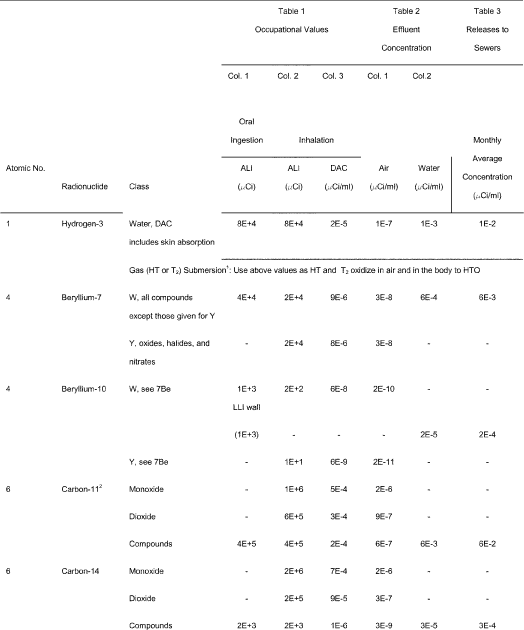

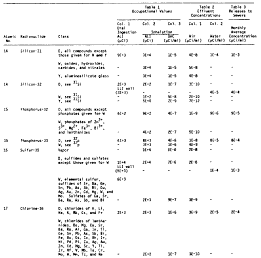
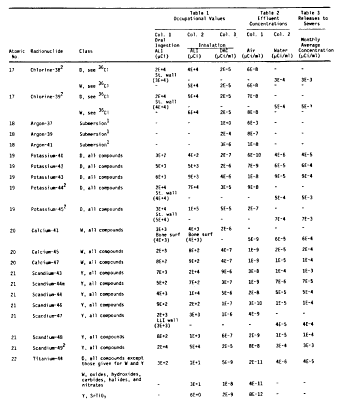
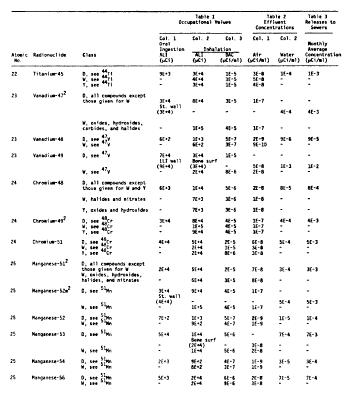
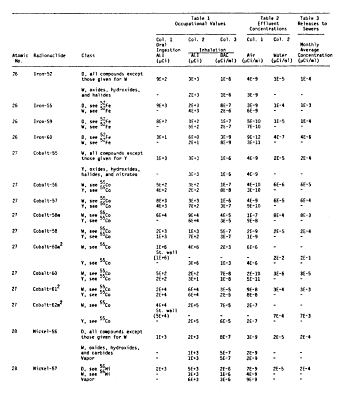




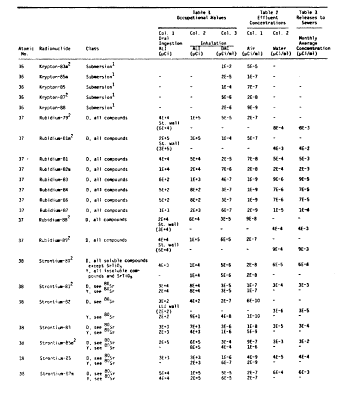
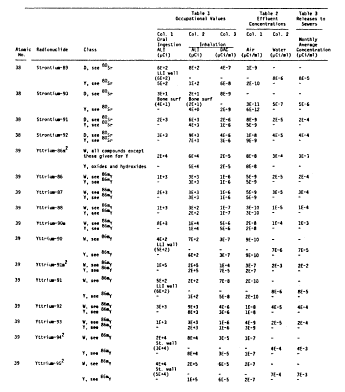
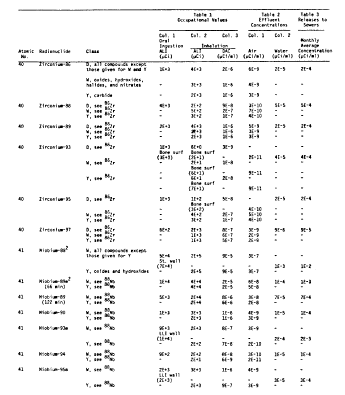


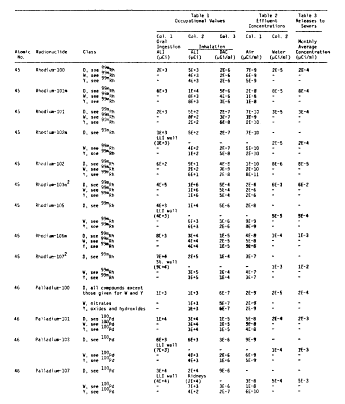
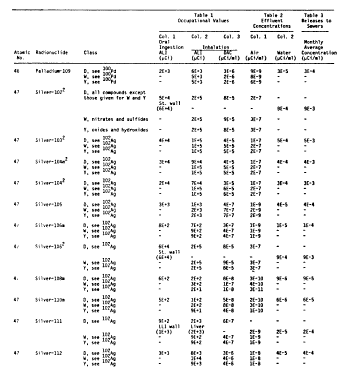
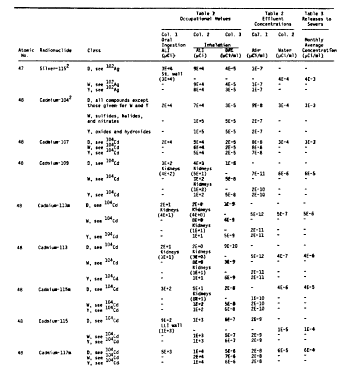
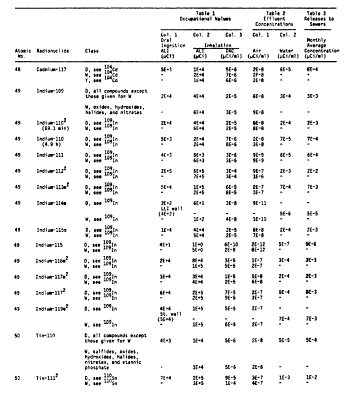
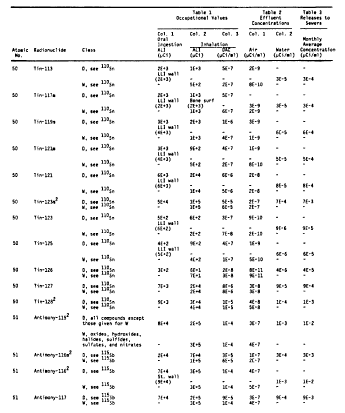
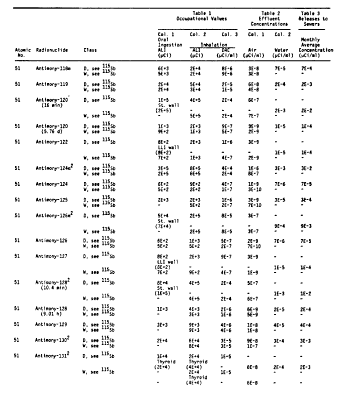
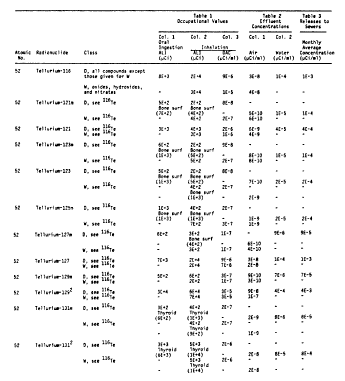
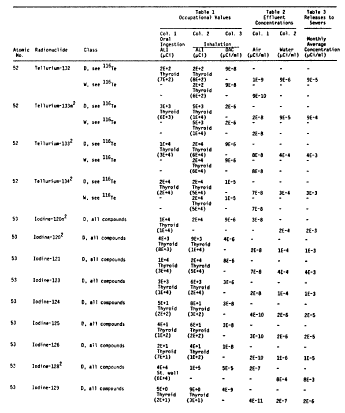
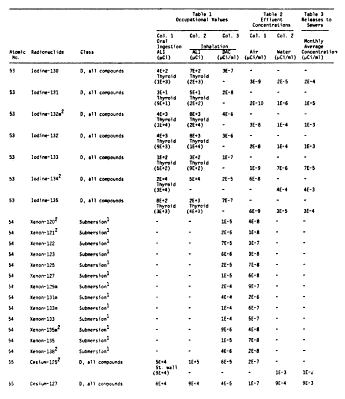
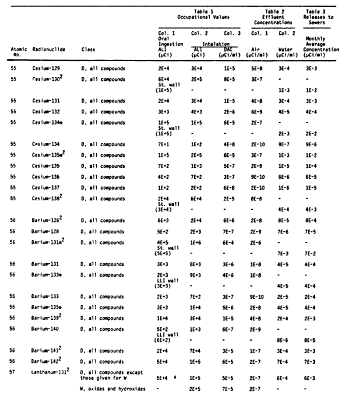
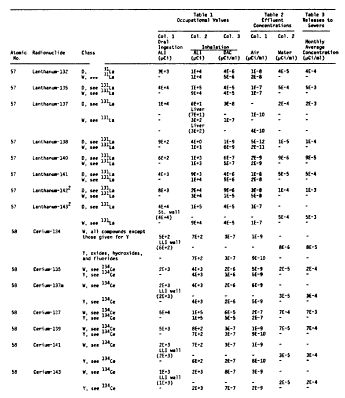
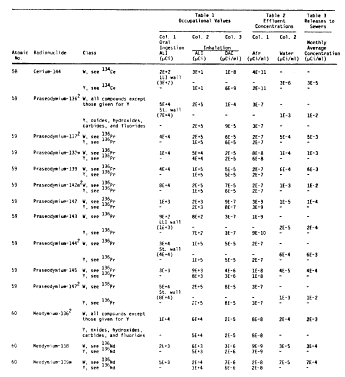

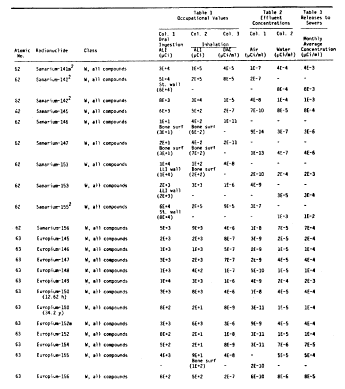


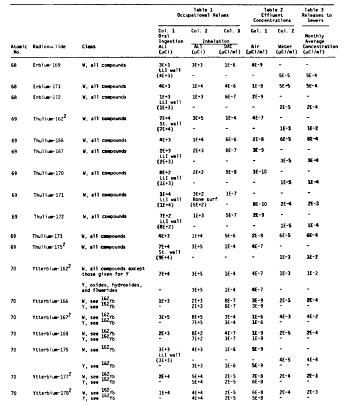
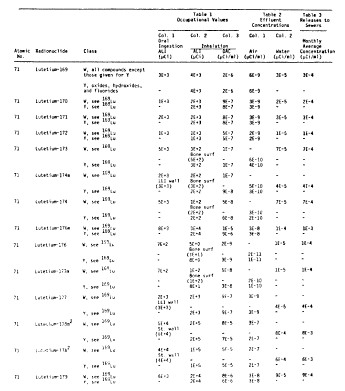

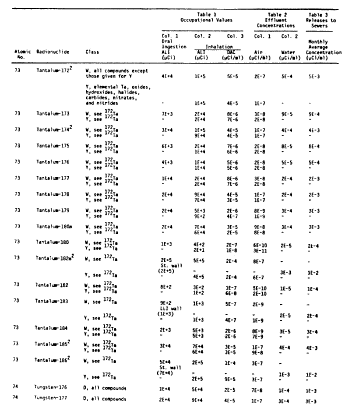
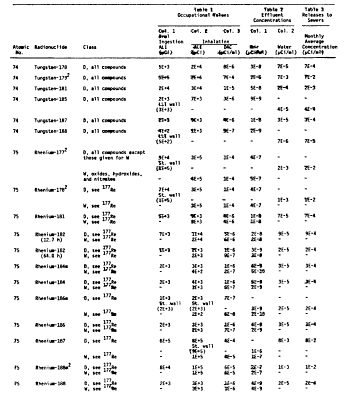

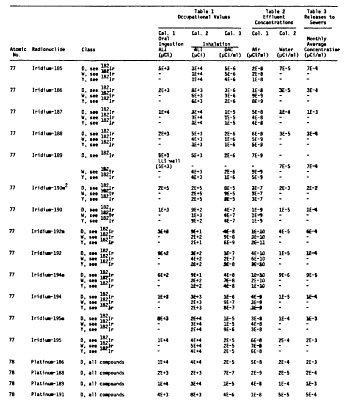

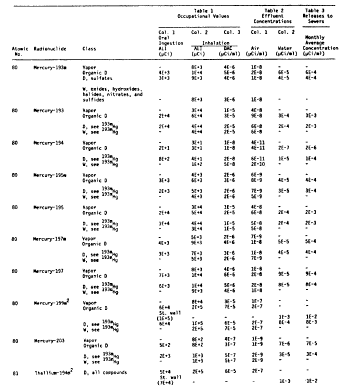
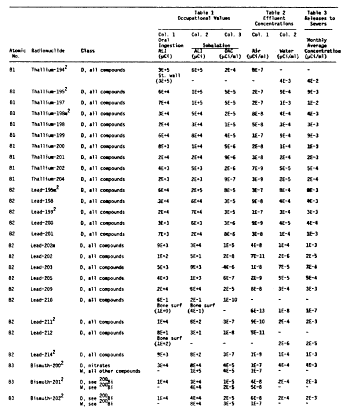
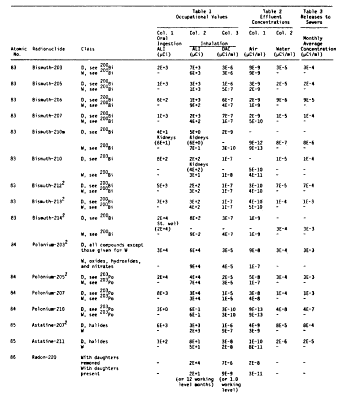

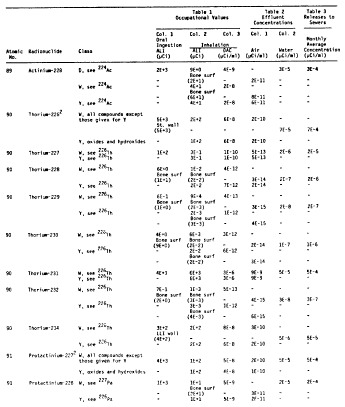

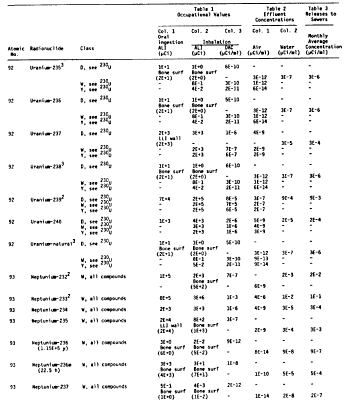

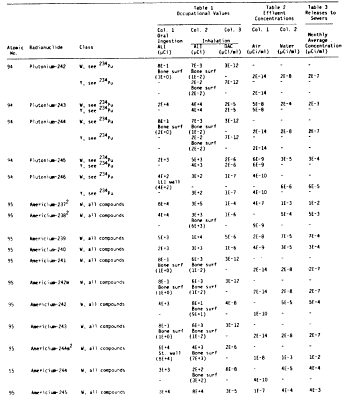
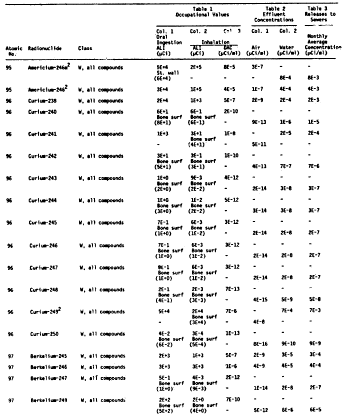
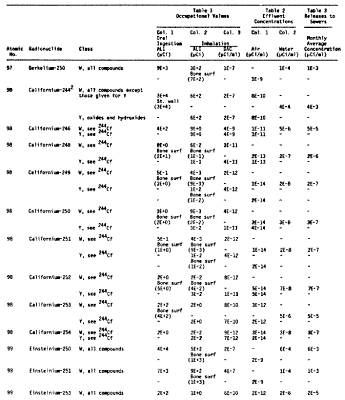

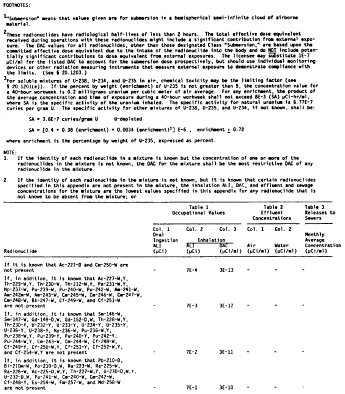


[56 FR 23409, May
21, 1991; 56 FR 61352, Dec. 3, 1991, as amended at 57 FR 57879,
Dec. 8, 1992. Redesignated at 58 FR 67659, Dec. 22, 1993, as
amended at 71 FR 15007, Mar. 27, 2006; 72 FR 55922, Oct. 1, 2007;
75 FR 73938, Nov. 30, 2010]





















































 [56 FR 23409, May
21, 1991; 56 FR 61352, Dec. 3, 1991, as amended at 57 FR 57879,
Dec. 8, 1992. Redesignated at 58 FR 67659, Dec. 22, 1993, as
amended at 71 FR 15007, Mar. 27, 2006; 72 FR 55922, Oct. 1, 2007;
75 FR 73938, Nov. 30, 2010]
[56 FR 23409, May
21, 1991; 56 FR 61352, Dec. 3, 1991, as amended at 57 FR 57879,
Dec. 8, 1992. Redesignated at 58 FR 67659, Dec. 22, 1993, as
amended at 71 FR 15007, Mar. 27, 2006; 72 FR 55922, Oct. 1, 2007;
75 FR 73938, Nov. 30, 2010]